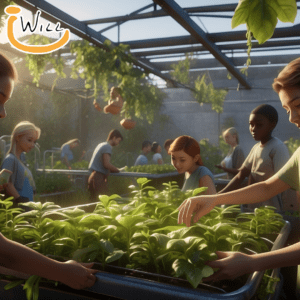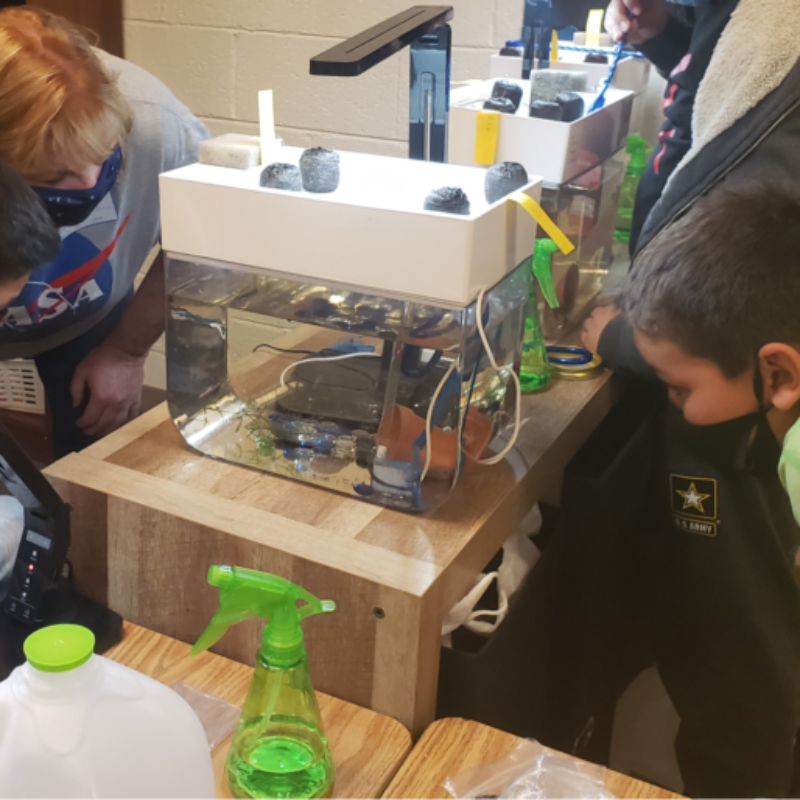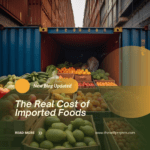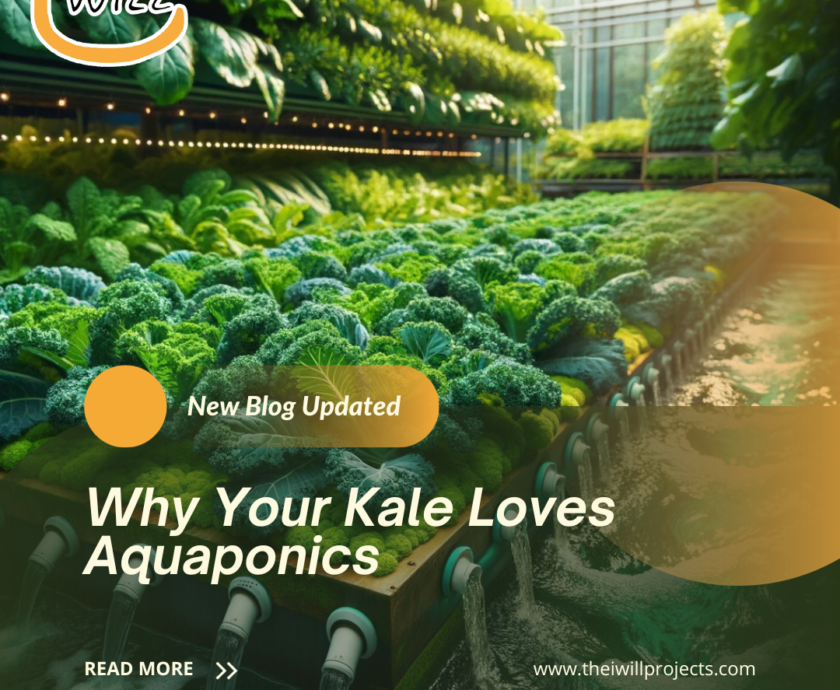“Sustainable agriculture is not just about growing food—it’s about nurturing the land and the community that depends on it.” — Michael Pollan
TweetTable of contents
- Introduction to Aquaponics
- The Growing Popularity of Aquaponics
- The Mechanics of Aquaponics
- History of Aquaponics
- The Science Behind Aquaponics
- Why Aquaponics is Considered Sustainable
- Benefits of Aquaponics Farming
- Challenges in Aquaponics
- Comparison with Traditional Farming
- Aquaponics in Urban Settings
- Is Aquaponics Suitable for All Climates?
- Commercial Aquaponics: Feasibility and Scale
- Aquaponics and Food Security
- Aquaponics: A Global Perspective
- The Role of Technology in Aquaponics
- Aquaponics and Organic Certification
- Aquaponics in Education
- Future Trends in Aquaponics
- Environmental Impact of Aquaponics
- Aquaponics and Policy
- Aquaponics: Beyond Vegetables
- Community-Based Aquaponics
- Aquaponics vs. Hydroponics: A Comparative Study
- Aquaponics and Climate Change
- The Economic Viability of Aquaponics
- Is Aquaponics Just a Trend?
- Conclusion: The Future of Aquaponics
- FAQs
Introduction to Aquaponics
Aquaponics, a fascinating blend of aquaculture and hydroponics, presents an innovative approach to sustainable farming.
The beauty of this system lies in its symbiotic relationship: fish waste provides essential nutrients for plants, while the plants help filter and purify the water for the fish.
This closed-loop system, mimicking natural ecosystems, is often hailed as a beacon of sustainability, offering a potential alternative to traditional farming methods.
However, amidst the growing enthusiasm, the question lingers: does aquaponics truly represent the future of farming, or is it simply the latest trend in the ever-evolving landscape of sustainable agriculture?

The Growing Popularity of Aquaponics
Over the past decade, aquaponics has captured the imagination of farmers, environmentalists, and urban gardeners alike.
With its promise of sustainable, low-impact farming, aquaponics seems like an ideal solution to many of the challenges facing modern agriculture.
However, its popularity also raises questions.
Is this enthusiasm justified by tangible benefits, or is it driven by the allure of a new, eco-friendly fad?
The Mechanics of Aquaponics
To understand whether aquaponics is truly a sustainable farming method, one must first grasp how the system works.
At its core, aquaponics relies on the interdependence of fish, plants, and bacteria.
Fish, kept in a tank, produce waste, primarily in the form of ammonia. This ammonia is then converted by beneficial bacteria into nitrates, which are essential nutrients for plant growth.
The plants, in turn, absorb these nitrates, purifying the water before it returns to the fish tank.
This cycle continues, creating a balanced and efficient system that minimizes waste and maximizes resource use.
History of Aquaponics
Aquaponics is often seen as a modern innovation, but its roots trace back thousands of years.
Ancient civilizations, including the Aztecs and Chinese, practiced early forms of integrated farming that resemble aquaponics.
The Aztecs, for example, built floating gardens, known as chinampas, that combined fish farming with crop cultivation.
In China, rice paddies were traditionally stocked with fish, creating a symbiotic system.
While these ancient practices were not identical to modern aquaponics, they laid the groundwork for the systems used today.
The Science Behind Aquaponics
The success of aquaponics hinges on the delicate balance of its three main components: fish, plants, and bacteria. Each plays a critical role in maintaining the health and productivity of the system.
Fish provide the essential nutrients that plants need to thrive.
Bacteria convert these nutrients into a form that plants can absorb, while plants remove toxins from the water, ensuring a safe environment for the fish.
This interdependence not only makes aquaponics efficient but also sustainable, as it reduces the need for external inputs such as chemical fertilizers and pesticides.
Why Aquaponics is Considered Sustainable
One of the key reasons aquaponics is lauded as a sustainable farming method is its ability to significantly reduce water usage.
Traditional farming is notoriously water-intensive, with irrigation accounting for the majority of freshwater consumption worldwide.
In contrast, aquaponics recirculates water within the system, reducing overall usage by up to 90%.
Additionally, because aquaponics relies on natural processes rather than synthetic chemicals, it minimizes environmental pollution and promotes biodiversity.
Benefits of Aquaponics Farming
The benefits of aquaponics extend beyond environmental sustainability.
Economically, aquaponics can be a profitable venture, particularly in regions where land and water are scarce.
The system’s high efficiency and low input costs make it an attractive option for small-scale farmers and entrepreneurs.
Socially, aquaponics has the potential to improve food security and provide fresh, locally-grown produce in urban areas where traditional farming is not feasible.
The educational benefits are also significant, as aquaponics systems can serve as living laboratories for students and community members interested in sustainable agriculture.
Challenges in Aquaponics
Despite its many advantages, aquaponics is not without its challenges.
The initial setup costs can be prohibitive, particularly for commercial-scale operations.
Building and maintaining a system requires a certain level of technical expertise, which can be a barrier for those new to the practice.
Furthermore, while aquaponics systems are highly efficient, they require careful monitoring and management to ensure the health of both fish and plants.
If one element of the system fails, it can disrupt the entire operation.
Comparison with Traditional Farming
When compared to traditional farming, aquaponics offers several distinct advantages as a sustainable farming method.
It uses far less water, requires no soil, and can be practiced in a variety of environments, including urban areas.
However, like any agricultural system, it also presents some limitations.
For example, while aquaponics can produce a wide range of crops, it may not be suitable for large-scale grain production, which still relies heavily on traditional methods.
Additionally, the reliance on electricity to power pumps and other equipment can be a drawback, particularly in regions with unstable energy supplies.
Aquaponics in Urban Settings
The rise of urban farming has brought aquaponics into the spotlight as a viable solution for cities looking to increase local food production.
In densely populated areas where land is scarce and expensive, aquaponics systems can be installed in small spaces, such as rooftops, basements, or even shipping containers. This not only helps reduce the carbon footprint associated with transporting food but also provides fresh, nutritious produce to urban communities.
Is Aquaponics Suitable for All Climates?
Aquaponics systems, a promising avenue for sustainable farming, can be adapted to a wide range of climates, but they are not without their challenges in extreme conditions.
In cold climates, for example, maintaining suitable water temperature for the fish can be energy-intensive, while in hot climates, preventing water evaporation can be difficult.
However, with thoughtful design and appropriate technology, these challenges can be mitigated.
For instance, greenhouses can be used to regulate temperature, and solar panels can provide renewable energy to power the system.
Commercial Aquaponics: Feasibility and Scale
As interest in sustainable farming grows, so too does the commercial potential of aquaponics.
Small-scale systems can be profitable, particularly in niche markets that value locally-grown, organic produce.
However, scaling up to commercial operations presents additional challenges, including higher initial costs and the need for specialized knowledge.
Successful commercial aquaponics operations often require careful planning, robust business models, and a deep understanding of both the biological and economic aspects of the system.
Aquaponics and Food Security
One of the most compelling arguments for aquaponics is its potential to address global food security.
As the world’s population continues to grow, traditional farming methods may struggle to meet the increasing demand for food.
Aquaponics, with its ability to produce food in a sustainable and efficient manner, could play a crucial role in ensuring that everyone has access to fresh, nutritious food.
Moreover, because aquaponics can be practiced in urban areas, it has the potential to reduce the distance food travels from farm to table, thereby reducing food waste and improving food quality.
Aquaponics: A Global Perspective
Aquaponics is gaining traction around the world, with countries in every continent experimenting with and adopting the technology.
In the United States, aquaponics is being used in urban farming initiatives, while in Australia, it is seen as a way to combat water scarcity.
In developing countries, aquaponics offers a means of improving food security and income in rural areas.
Each region presents its own unique challenges and opportunities, but the global interest in aquaponics is a testament to its potential as a sustainable farming method.

The Role of Technology in Aquaponics
Advances in technology are playing a critical role in the evolution of aquaponics.
From automated systems that monitor water quality to innovative lighting solutions that optimize plant growth, technology is helping to make aquaponics more efficient and accessible.
Additionally, data analytics and artificial intelligence are being used to improve system management and predict potential issues before they arise.
As technology continues to evolve, it is likely that aquaponics will become even more efficient and scalable.
Aquaponics and Organic Certification
A common question among consumers and farmers alike is whether aquaponics can be considered organic, especially in the context of sustainable farming.
The answer depends on the specific practices used within the system.
While aquaponics inherently avoids synthetic fertilizers or pesticides, the use of fish feed and other inputs can complicate organic certification.
Many aquaponics practitioners are committed to following organic principles.
There is also a growing movement to create certification standards that acknowledge the unique qualities of aquaponics systems.
Aquaponics in Education
Aquaponics is increasingly being used as an educational tool in schools and community centers.
The hands-on nature of aquaponics makes it an excellent way to teach students about biology, ecology, and sustainability.
By building and maintaining their own systems, students can learn about the interconnectedness of living organisms and the importance of environmental stewardship.
Moreover, aquaponics projects can help foster a sense of responsibility and a connection to the natural world, both of which are crucial for the development of future environmental leaders.
Future Trends in Aquaponics
The future of aquaponics is bright, with new trends and innovations on the horizon.
One area of interest is the integration of aquaponics with other sustainable practices, such as permaculture and renewable energy.
There is also growing interest in expanding aquaponics beyond vegetables to include other types of produce, such as fruits and grains.
As the global demand for sustainable food production increases, it is likely that aquaponics will continue to evolve and play a key role in the future of agriculture.
Environmental Impact of Aquaponics
The environmental benefits of aquaponics are numerous.
By reducing water usage and eliminating the need for chemical fertilizers, aquaponics can significantly reduce the environmental impact of farming.
Additionally, because aquaponics systems are typically small and contained, they have a lower carbon footprint than traditional farming methods.
Furthermore, aquaponics can help preserve natural ecosystems by reducing the demand for land and water resources.
Aquaponics and Policy
Government support and regulation play a crucial role in the development of aquaponics.
In many countries, policymakers are beginning to recognize the potential of aquaponics as a sustainable farming method and are providing incentives and support for its development.
However, there is still much work to be done in terms of creating regulatory frameworks that accommodate the unique characteristics of aquaponics.
As the industry grows, it will be important for policymakers to develop guidelines that ensure the sustainability and safety of aquaponics systems.
Aquaponics: Beyond Vegetables
While aquaponics is most commonly associated with vegetable production, there is potential to expand the practice to include other types of produce.
Some farmers are experimenting with growing fruits, herbs, and even grains in aquaponics systems.
Additionally, aquaponics can be used to raise a variety of fish species, providing a source of protein as well as vegetables. This diversification could make aquaponics an even more attractive option for farmers and consumers alike.
Community-Based Aquaponics
Community-based aquaponics projects are on the rise, offering a model for sustainable farming that empowers local communities and improves food security.
These projects often involve the creation of small-scale aquaponics systems that are managed by community members.
By providing access to fresh, healthy food, these projects can help reduce food deserts and improve the overall health and well-being of communities.
Additionally, they serve as a testament to the potential of aquaponics to transform the way we grow and consume food in a sustainable and localized manner.
Aquaponics vs. Hydroponics: A Comparative Study
Aquaponics and hydroponics are often compared, as both are soil-less methods of growing plants.
While they share some similarities, there are also key differences between the two.
Hydroponics relies solely on nutrient solutions to feed plants, while aquaponics uses fish waste as a natural fertilizer.
This makes aquaponics more sustainable in the long term, as it reduces the need for external inputs.
However, hydroponics is often simpler to set up and maintain, making it a more accessible option for beginners.
Ultimately, the choice between aquaponics and hydroponics depends on the specific goals and resources of the grower.
Aquaponics and Climate Change
As the effects of climate change become more pronounced, the need for sustainable farming methods is greater than ever.
Aquaponics has the potential to mitigate some of the impacts of climate change by reducing water usage and promoting local food production.
Additionally, because aquaponics systems are typically small and flexible, they can be easily adapted to changing environmental conditions.
By providing a reliable source of food in the face of climate change, aquaponics could play a crucial role in ensuring food security in the future.
The Economic Viability of Aquaponics
The economic viability of aquaponics is a topic of much debate.
While there is no doubt that aquaponics offers numerous benefits, the costs associated with setting up and maintaining a system can be high.
However, with careful planning and management, aquaponics can be a profitable venture.
In particular, niche markets that value locally-grown, organic produce are likely to be the most profitable for aquaponics operations.
Additionally, as technology advances and costs decrease, the economic viability of aquaponics is likely to improve.
Is Aquaponics Just a Trend?
Given the growing popularity of aquaponics, it is natural to ask whether it is a lasting innovation or just another trend in sustainable farming.
While there is no denying that aquaponics has captured the public’s imagination, its potential to revolutionize farming should not be underestimated.
The sustainability, efficiency, and adaptability of aquaponics make it a viable alternative to traditional farming methods, particularly in a world facing increasing environmental and resource challenges.
While only time will tell if aquaponics becomes a mainstream practice, its benefits suggest that it is more than just a passing fad in the realm of sustainable farming.

Conclusion: The Future of Aquaponics
Aquaponics represents a promising and innovative approach to sustainable farming.
Its ability to reduce water usage, minimize waste, and produce fresh, local food makes it an attractive option in a world facing environmental and resource challenges.
While it is still a relatively new practice, the growing interest in aquaponics suggests that it is more than just a trend.
As technology advances and more people recognize the benefits of aquaponics, it has the potential to play a significant role in the future of agriculture.
Whether it will become mainstream or remain a niche practice, one thing is clear: aquaponics offers a sustainable and efficient way to grow food, making it a valuable tool for the future of farming.
FAQs
Aquaponics is a sustainable farming system that combines aquaculture (raising fish) with hydroponics (growing plants in water). It creates a closed-loop ecosystem where fish waste provides nutrients for plants, and the plants, in turn, filter and purify the water for the fish.
Why is sustainable farming important?
Sustainable farming is crucial for ensuring long-term food security, preserving natural resources, and reducing environmental impact. By using methods that protect and enhance the environment, sustainable farming helps maintain soil health, conserve water, and reduce greenhouse gas emissions. This approach also supports biodiversity and can improve the resilience of agricultural systems to climate change, ensuring that future generations can continue to produce food.
How does aquaponics differ from hydroponics?
While both aquaponics and hydroponics are soil-less methods of growing plants, the key difference is that aquaponics uses fish waste as a natural fertilizer, while hydroponics relies on synthetic nutrient solutions. This makes aquaponics more sustainable in the long run.
What are sustainable farming practices?
Sustainable farming practices include crop rotation, conservation tillage, integrated pest management, and organic farming. These methods aim to maintain or improve the health of the land, reduce dependence on chemical inputs, and promote biodiversity. Practices like using cover crops, composting, and agroforestry also contribute to soil fertility and carbon sequestration, making agriculture more resilient and environmentally friendly.
Can aquaponics be profitable?
Yes, aquaponics can be profitable, particularly in niche markets that value locally-grown, organic produce. However, the initial setup and maintenance costs can be high, so careful planning and management are essential.
Is aquaponics suitable for all climates?
Aquaponics systems can be adapted to a wide range of climates, but they may require additional measures, such as greenhouses or climate control, to function effectively in extreme conditions.
Can sustainable farming feed the world?
Sustainable farming has the potential to feed the world by increasing productivity in a way that preserves and enhances the environment. While it may require shifts in how food is produced and consumed, sustainable farming can help meet global food demands by improving yields, reducing waste, and promoting food security. However, widespread adoption and support, including policy changes and education, are essential for its success on a global scale.
Can aquaponics help with food security?
Aquaponics has the potential to improve food security by providing a reliable source of fresh, nutritious food, particularly in urban areas or regions with limited arable land.
What are the environmental benefits of aquaponics?
Aquaponics significantly reduces water usage compared to traditional farming, eliminates the need for chemical fertilizers, and has a lower carbon footprint, making it a highly sustainable farming method.
Can organic farming be sustainable?
Yes, organic farming can be sustainable, as it emphasizes the use of natural processes and inputs rather than synthetic chemicals. By focusing on soil health, biodiversity, and ecological balance, organic farming aligns with the principles of sustainability. However, its sustainability depends on factors such as land management practices, crop selection, and the balance between input and output, making it essential to tailor organic practices to local conditions.
Is sustainable farming the same as organic?
Sustainable farming and organic farming share similar goals, such as reducing environmental impact and promoting soil health, but they are not identical. Organic farming focuses on avoiding synthetic chemicals and GMOs, while sustainable farming encompasses a broader range of practices aimed at long-term environmental, economic, and social sustainability. While organic farming can be a part of sustainable farming, the latter includes practices beyond the scope of organic certification.
What are the benefits of local sustainable farming?
Local sustainable farming offers numerous benefits, including reducing the carbon footprint associated with food transportation, supporting local economies, and providing fresher, more nutritious produce. It also encourages community engagement, preserves local biodiversity, and promotes the use of farming practices that protect and enhance the local environment. By focusing on sustainability at a local level, these farms contribute to a more resilient and self-sufficient food system.
The I Will Projects, a 501c3 Non-Profit, promotes diverse solutions for global challenges. Our IFIZ education programs, emphasizing aquaponics, and insect farming, empower communities through knowledge, collaboration, and sustainable innovation.













